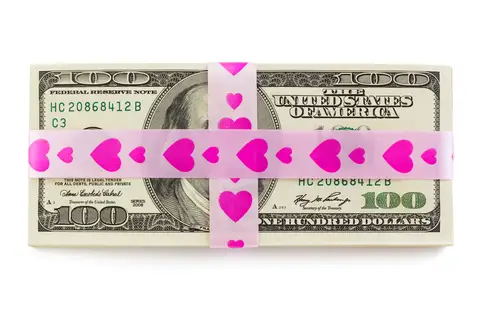 Do you charge more for women’s products and services than you do for comparable men’s products? Unfortunately, some companies do. According to a study by the NYC Department of Consumer Affairs, women pay 13% more for personal care items (e.g., the pink disposable razor versus the blue disposable razor), 8% more for adult clothing, and 7% more for toys and accessories. The study, titled From Cradle to Cane: The Cost of Being a Female Consumer, focused solely on product pricing, but what about services? What about haircuts for women versus men? What about dry cleaning a man’s shirt versus a women’s blouse?
Do you charge more for women’s products and services than you do for comparable men’s products? Unfortunately, some companies do. According to a study by the NYC Department of Consumer Affairs, women pay 13% more for personal care items (e.g., the pink disposable razor versus the blue disposable razor), 8% more for adult clothing, and 7% more for toys and accessories. The study, titled From Cradle to Cane: The Cost of Being a Female Consumer, focused solely on product pricing, but what about services? What about haircuts for women versus men? What about dry cleaning a man’s shirt versus a women’s blouse?
Extension of equal pay
The discussion about the ‘pink tax’ reflects the concerns about equal pay. You may recall that President Kennedy signed the Equal Pay Act in 1963, which made it illegal to pay different wages based on gender. Equal pay is required for “jobs requiring equal skill, effort, and responsibility, and which are performed under similar working conditions.” Of course, making this determination isn’t easy.
Despite the law, it’s common knowledge that there continues to be a pay gap in the U.S. (the median annual earnings of women working full-time is 79% of the pay that men working full-time receive). Is the spread because of discrimination or for some other reason? This question is explored in a recent AAUW study, The Simple Truth About the Gender Pay Gap, Spring 2016 Edition.
Is the pay gap the result of choice (women choosing lower paying work, such as teaching or nursing versus engineering) or discrimination (being paid less for the same work, where female engineers are paid less than their male counterparts)? It seems that even for the same work, the pay gap persists (e.g., the gap is 83% for lawyers and 87% for computer programmers and pharmacists).
The study found that “segregation of occupations is a major factor behind the pay gap,” but not the only factor. The study also explored whether age, ethnicity, education were at play, and found that there was something to these factors as well.
The study advises employers to evaluate a job taking into account the “complexity of issues encountered, the depth and breadth of knowledge needed, the nature of interpersonal contracts required, and the physical working conditions.” For example, is a delivery driver’s work typically done by men comparable to office work done usually performed by women worthy of equal pay? Minnesota has information about job audits aimed at equal pay. Similar concepts to equal pay can be applied to equal pricing for goods and services.
Conclusion
When I ran my law practice, it never occurred to me to charge different fees for services based on gender; a will is a will and a contract a contract. All businesses should adopt equal standards when setting the price of goods and services. If there are legitimate reasons for higher pricing on women’s items, the justification should be obvious. In my view, a haircut should be based primarily on the time it takes to perform the service. Usually, this means the fee a man is charged for his buzz cut should be the same as the fee a woman with very long hair pays to get the ends trimmed if it takes the same amount of time. However, a new hairstyle for a woman may take much longer, and a higher price would be justified.
Think about what your business does and answer this: do you impose a pink tax?
Want to follow the conversation about the pink tax on Twitter? Look for #pinktax, #gendertax, and #genderpricing.


